
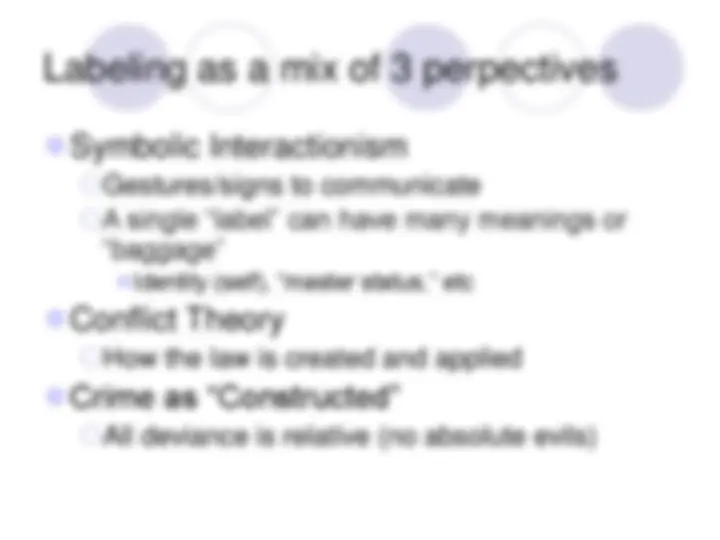
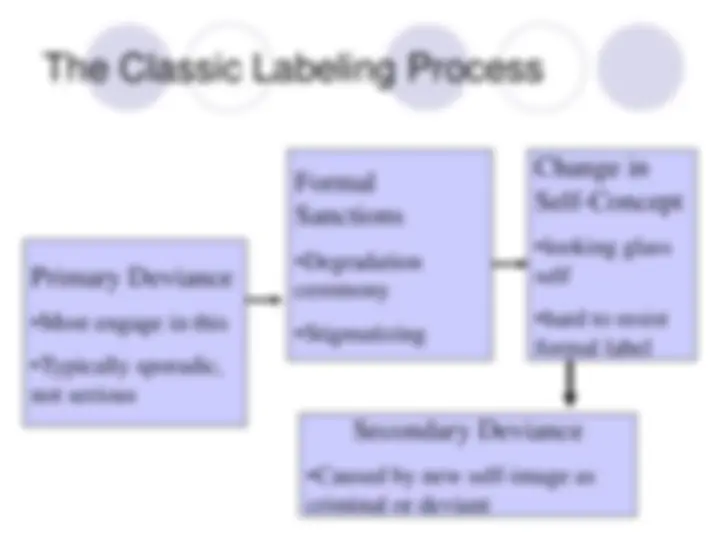
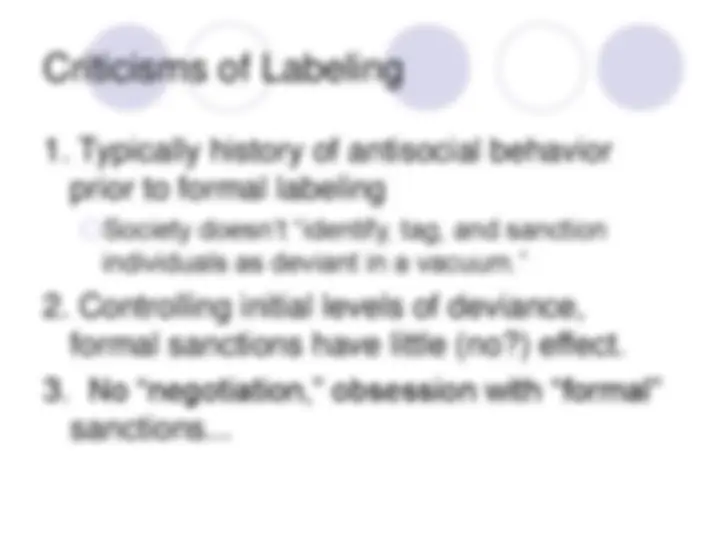

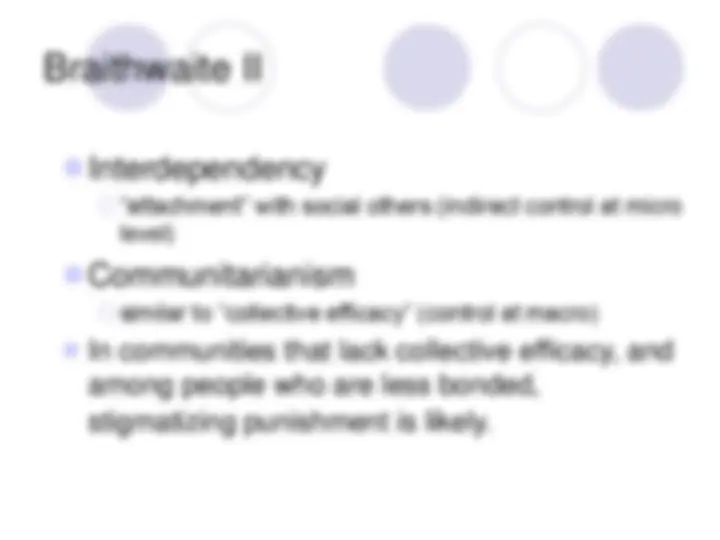
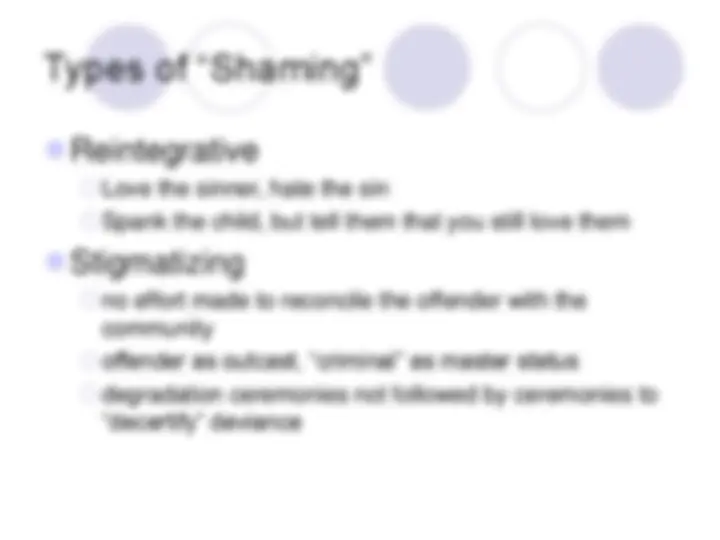
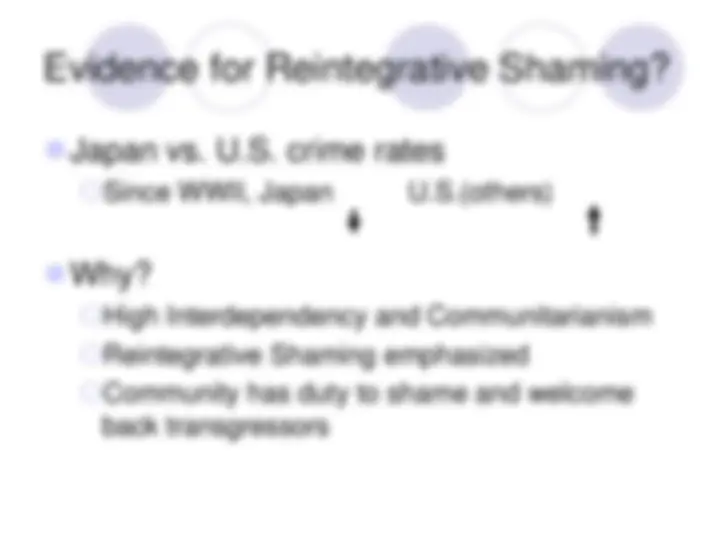
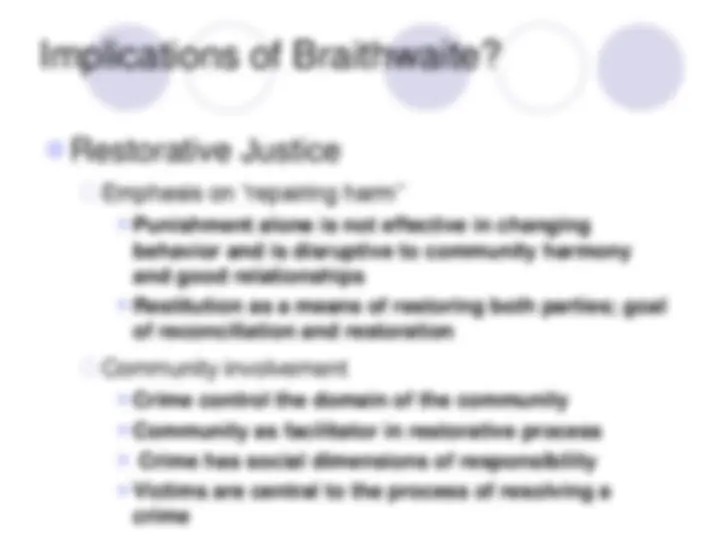
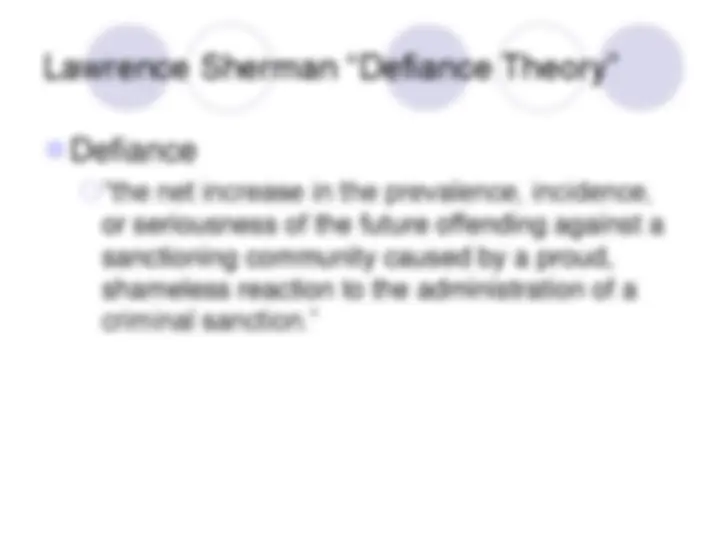


Study with the several resources on Docsity

Earn points by helping other students or get them with a premium plan


Prepare for your exams
Study with the several resources on Docsity

Earn points to download
Earn points by helping other students or get them with a premium plan
Community
Ask the community for help and clear up your study doubts
Discover the best universities in your country according to Docsity users
Free resources
Download our free guides on studying techniques, anxiety management strategies, and thesis advice from Docsity tutors
Labeling Theory, a sociological perspective that examines how society labels and stigmatizes individuals as deviant. The theory emerged in the 1960s, influenced by social context and the works of Lemert and Tannenbaum. Labeling Theory is a mix of Symbolic Interactionism and Conflict Theory, focusing on the self-concept change, formal sanctions, and criticisms of the labeling process. The document also discusses the policy implications, including Diversion, De-institutionalization, Decriminalization, and Due Process, and introduces the concepts of Reintegrative Shaming and Stigmatization.
Typology: Slides
1 / 16

This page cannot be seen from the preview
Don't miss anything!










“Classic” Labeling Reintegrative Shaming Defiance Theory
Many “early writings” Lemert in 1950s Tannenbaum in 1938 Emerged in the 1960s as a force Social context of the 1960s “Fit” with the theory Labeling theory = “ironic twist”
Primary Deviance
Austrailian Criminologist Crime, Shame, and Reintegration Pretty complex theory (Not parsimonious) BUT, Central concepts are not that complex Reintegrative Shaming vs. Stigmatization Interdependency Communitarianism
Behaviors (from others) that induce guilt, shame snide comment, verbal confrontations stocks/pillory, the “scarlet letter” Naval tradition of “captains mask” In Western society, shaming has become uncoupled from formal punishment Offenders privately sent away to warehouses by corrections or court “officials”
Reintegrative Love the sinner, hate the sin Spank the child, but tell them that you still love them Stigmatizing no effort made to reconcile the offender with the community offender as outcast, “criminal” as master status degradation ceremonies not followed by ceremonies to “decertify” deviance
Stigmatizing United States Court, prison, etc. (remove and shun from community) Reintegrative Japan Ceremonies to shame and welcome back
Japan vs. U.S. crime rates Since WWII, Japan U.S.(others) Why? High Interdependency and Communitarianism Reintegrative Shaming emphasized Community has duty to shame and welcome back transgressors
Restorative Justice Emphasis on “repairing harm” Punishment alone is not effective in changing behavior and is disruptive to community harmony and good relationships Restitution as a means of restoring both parties; goal of reconciliation and restoration Community involvement Crime control the domain of the community Community as facilitator in restorative process Crime has social dimensions of responsibility Victims are central to the process of resolving a crime
Sanctions are defined as “unfair” Sanctioning agent behaves with disrespect for the offender or his/her group The sanction is actually unfair (discriminatory, excessive, undeserved) – COPS Offender is poorly bonded to sanctioning agent or community Borrowed from social bond theory Hostile reaction the labeling theory irony again (getting tough produces opposite reaction)